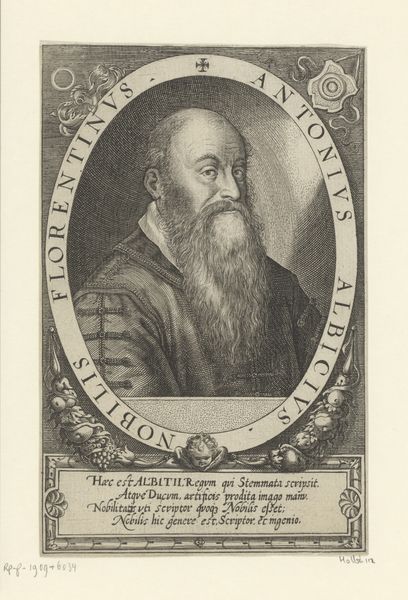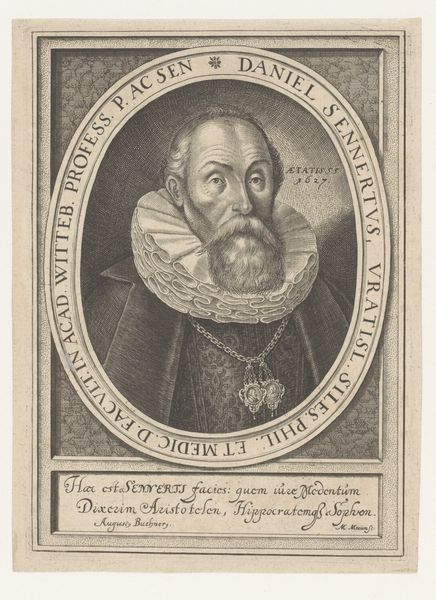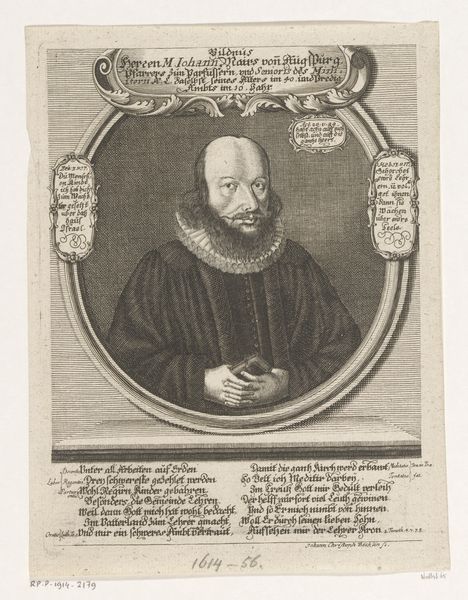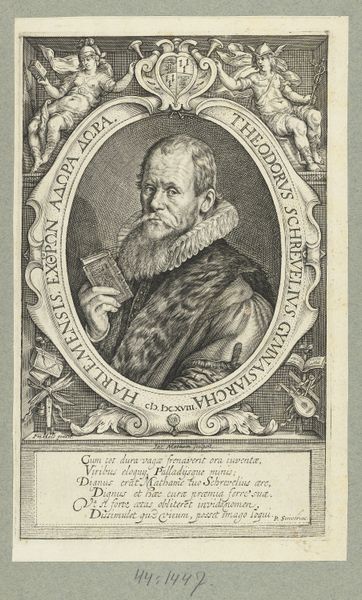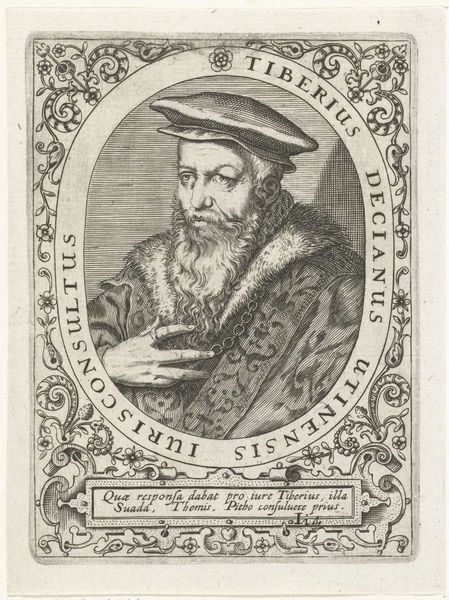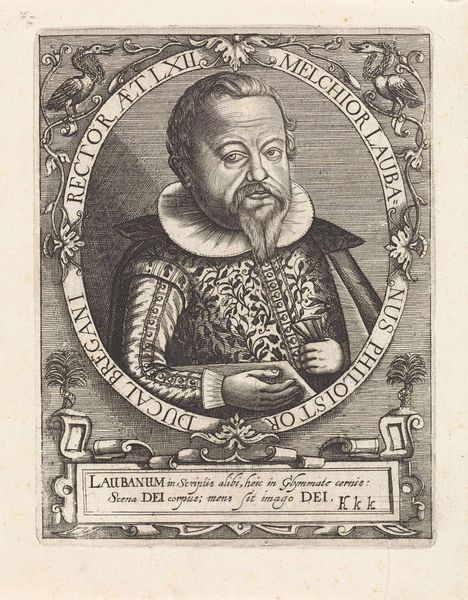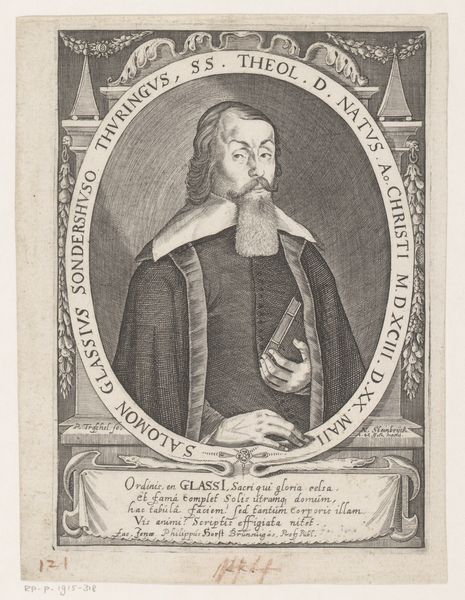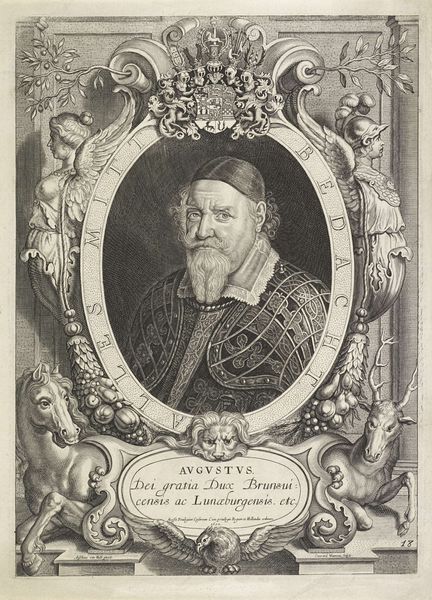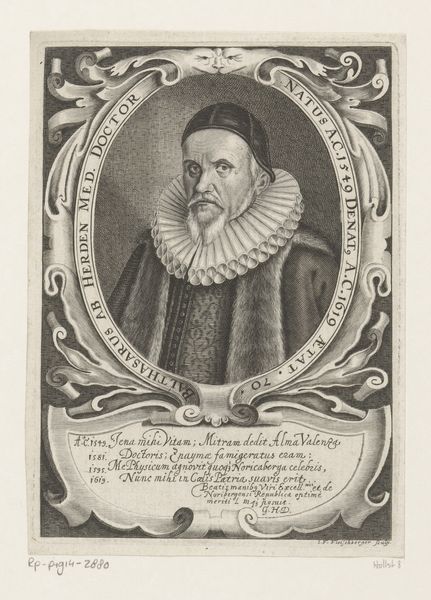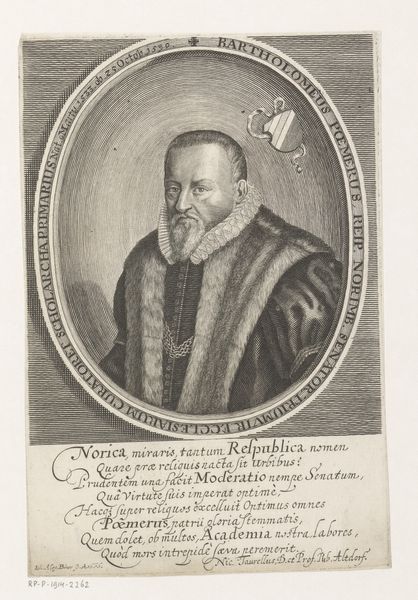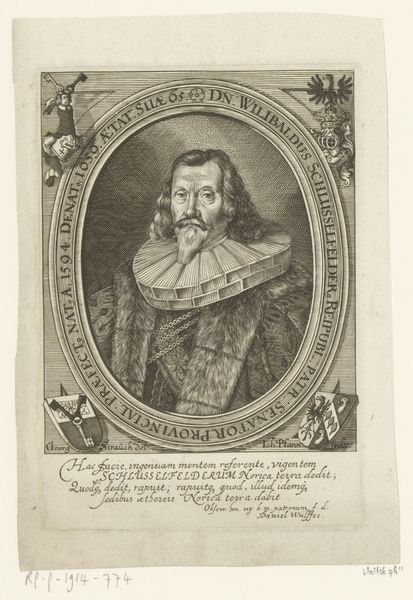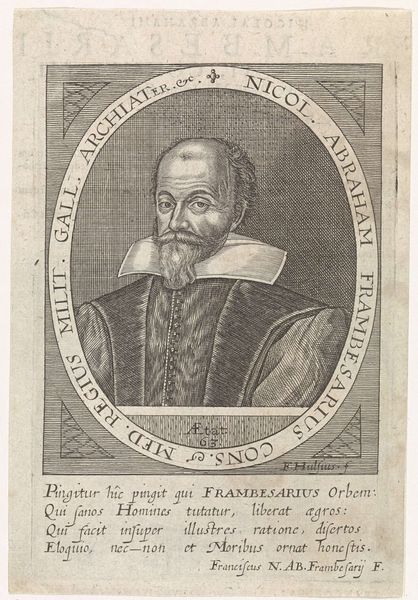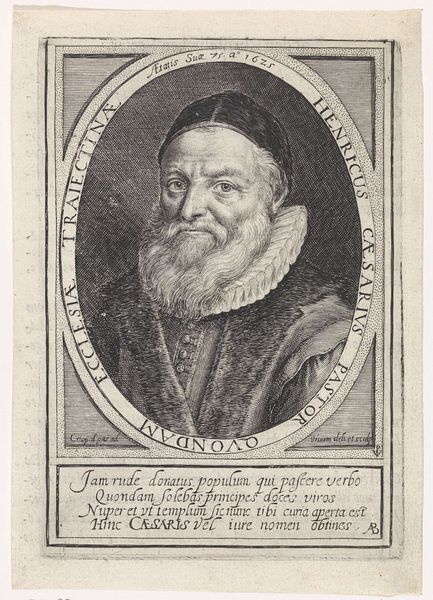
print, engraving
#
portrait
# print
#
history-painting
#
engraving
Dimensions: height 272 mm, width 170 mm
Copyright: Rijks Museum: Open Domain
This is Albert Poel's engraved portrait of Willem Baudartius. It's made entirely from lines incised into a copper plate. The image would have been created by a skilled artisan, who mirrored an existing portrait of Baudartius in order to transfer it to the plate. Look closely, and you can see how the varying density of the lines creates the illusion of light and shadow, defining Baudartius's features and the folds of his garments. The lettering, too, is meticulously engraved, adding layers of meaning to the image. Engraving like this was a highly skilled and time-consuming craft. The engraver needed precise control over the burin to create the desired effect. It was also collaborative work. While Albert Poel may have been credited as the artist, he likely worked with printers and publishers to produce and distribute the final print. This reproductive technique allowed for the wider circulation of Baudartius's image. The print's power lies in its ability to capture a likeness, convey status, and disseminate ideas. It blurs the boundaries between art, craft, and industry, offering a glimpse into the social and cultural landscape of its time.
Comments
No comments
Be the first to comment and join the conversation on the ultimate creative platform.
